
The Voyage of the Beagle is the title most commonly given to the book written by Charles Darwin and published in 1839 as his Journal and Remarks, bringing him considerable fame and respect. This was the third volume of The Narrative of the Voyages of H.M. Ships Adventure and Beagle, the other volumes of which were written or edited by the commanders of the ships. Journal and Remarks covers Darwin's part in the second survey expedition of the ship HMS Beagle. Due to the popularity of Darwin's account, the publisher reissued it later in 1839 as Darwin's Journal of Researches, and the revised second edition published in 1845 used this title. A republication of the book in 1905 introduced the title The Voyage of the "Beagle", by which it is now best known.

Emma Darwin was an English woman who was the wife and first cousin of Charles Darwin. They were married on 29 January 1839 and were the parents of ten children, seven of whom survived to adulthood.
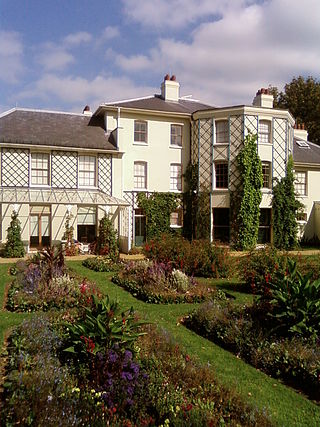
Down House is the former home of the English naturalist Charles Darwin and his family. It was in this house and garden that Darwin worked on his theory of evolution by natural selection, which he had conceived in London before moving to Down.

Charles Darwin's views on religion have been the subject of much interest and dispute. His pivotal work in the development of modern biology and evolution theory played a prominent part in debates about religion and science at the time. In the early 20th century, his contributions became a focus of the creation–evolution controversy in the United States.
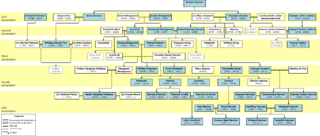
The Darwin–Wedgwood family are members of two connected families, each noted for particular prominent 18th-century figures: Erasmus Darwin, a physician and natural philosopher, and Josiah Wedgwood FRS, a noted potter and founder of the eponymous Josiah Wedgwood & Sons pottery company. The Darwin and Wedgwood families were on friendly terms for much of their history and members intermarried, notably Charles Darwin, who married Emma Wedgwood.
Richard Darwin Keynes, CBE, FRS was a British physiologist. The great-grandson of Charles Darwin, Keynes edited his great-grandfather's accounts and illustrations of Darwin's famous voyage aboard HMS Beagle into The Beagle Record: Selections From the Original Pictorial Records and Written Accounts of the Voyage of the H.M.S. Beagle, which won praise from the New York Review of Books and The New York Times Book Review.

Sir Henry Holland, 1st Baronet, FRS was an English physician and travel writer.

Robert McCormick was a British Royal Navy ship's surgeon, explorer and naturalist.
Following the inception of Charles Darwin's theory of natural selection in 1838, the development of Darwin's theory to explain the "mystery of mysteries" of how new species originated was his "prime hobby" in the background to his main occupation of publishing the scientific results of the Beagle voyage. He was settling into married life, but suffered from bouts of illness and after his first child was born the family moved to rural Down House as a family home away from the pressures of London.
The inception of Darwin's theory occurred during an intensively busy period which began when Charles Darwin returned from the survey voyage of the Beagle, with his reputation as a fossil collector and geologist already established. He was given an allowance from his father to become a gentleman naturalist rather than a clergyman, and his first tasks were to find suitable experts to describe his collections, write out his Journal and Remarks, and present papers on his findings to the Geological Society of London.

The British naturalist Charles Darwin corresponded with his extended family and with an extraordinarily wide range of people from all over the world. The letters, over 15,000 in all, provide many insights on issues ranging from the origins of key scientific concepts, to religious and philosophical discussions which have continued to the present day. The letters also illuminate many aspects of Darwin and his biography: the development of his ideas; insights into character and health; and private opinions on controversial issues. His letters to the Harvard botanist Asa Gray, for example, show his opinions on slavery and the American Civil War. Darwin relied upon correspondence for much of his scientific work, and also used letters to marshal support for his ideas amongst friends and colleagues. The historian of science Janet Browne has argued that Darwin's ability to correspond daily played a crucial role in the development of his theory and his ability to garner support for it from colleagues.

For much of his adult life, Charles Darwin's health was repeatedly compromised by an uncommon combination of symptoms, leaving him severely debilitated for long periods of time. However, Darwin himself suggested that, in some ways, this may have helped his work: "Even ill-health, though it has annihilated several years of my life, has saved me from the distractions of society and amusement."

Elizabeth Janet Browne is a British historian of science, known especially for her work on the history of 19th-century biology. She taught at the Wellcome Trust Centre for the History of Medicine, University College, London, before returning to Harvard. She is currently Aramont Professor of the History of Science at Harvard University.

Thomas Hornsey Bell FRS FLS was an English zoologist, dental surgeon and writer, born in Poole, Dorset, England.
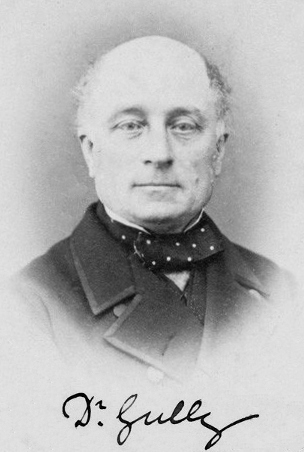
James Manby Gully was a Victorian medical doctor, well known for practising hydrotherapy, or the "water cure". Along with his partner James Wilson, he founded a very successful "hydropathy" clinic in Malvern, Worcestershire, which had many notable Victorians, including such figures as Charles Darwin and Alfred, Lord Tennyson, as clients.

The second voyage of HMS Beagle, from 27 December 1831 to 2 October 1836, was the second survey expedition of HMS Beagle, made under her newest commander, Robert FitzRoy. FitzRoy had thought of the advantages of having someone onboard who could investigate geology, and sought a naturalist to accompany them as a supernumerary. At the age of 22, the graduate Charles Darwin hoped to see the tropics before becoming a parson, and accepted the opportunity. He was greatly influenced by reading Charles Lyell's Principles of Geology during the voyage. By the end of the expedition, Darwin had made his name as a geologist and fossil collector, and the publication of his journal gave him wide renown as a writer.
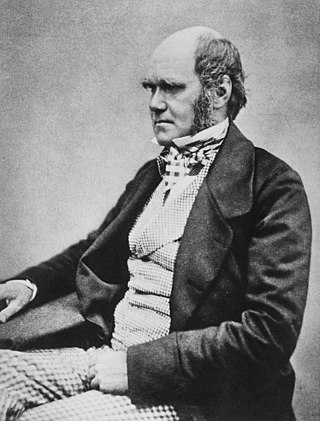
Charles Robert Darwin was an English naturalist, geologist, and biologist, widely known for his contributions to evolutionary biology. His proposition that all species of life have descended from a common ancestor is now generally accepted and considered a fundamental scientific concept. In a joint publication with Alfred Russel Wallace, he introduced his scientific theory that this branching pattern of evolution resulted from a process he called natural selection, in which the struggle for existence has a similar effect to the artificial selection involved in selective breeding. Darwin has been described as one of the most influential figures in human history and was honoured by burial in Westminster Abbey.
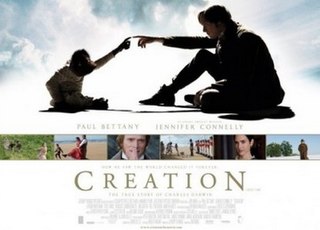
Creation is a 2009 British biographical drama film about Charles Darwin's relationship with his wife Emma and his memory of their eldest daughter Annie, as he struggles to write On the Origin of Species. The film, directed by Jon Amiel and starring real life couple Paul Bettany and Jennifer Connelly as Charles and Emma Darwin, is a somewhat fictionalised account based on Randal Keynes's Darwin biography Annie's Box.

Randal Hume Keynes, OBE, FLS was a British conservationist, author, and great-great-grandson of Charles Darwin.

Caroline Sarah Wedgwood was an English botanist. She was a member of the Darwin–Wedgwood family and the elder sister of English naturalist Charles Darwin. In the 1850s she planted the Leith Hill Rhododendron Wood, which in 1944 was bequeathed to the National Trust by her grandson, composer Ralph Vaughan Williams.

















